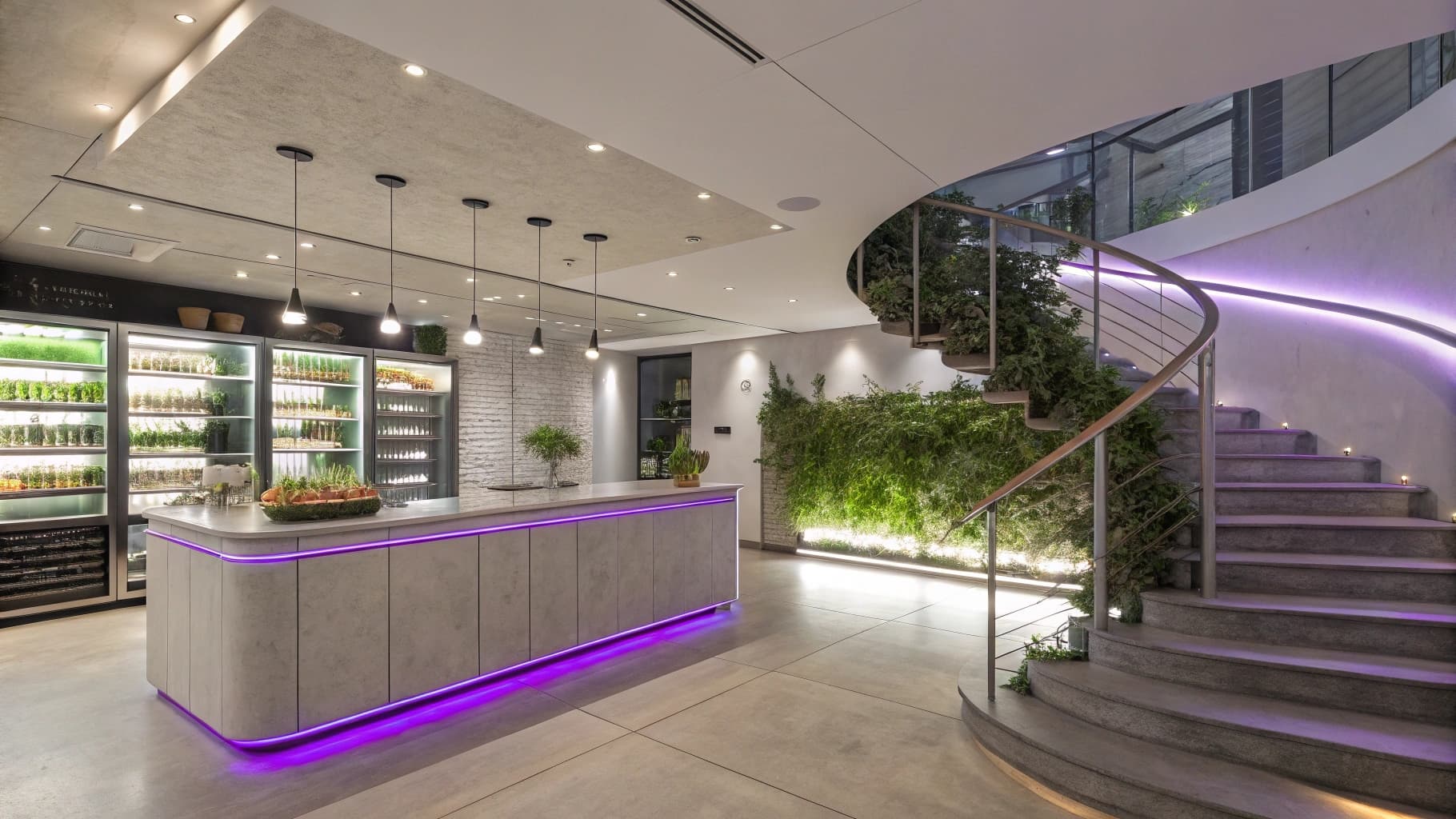In recent years, the concept of luxury has undergone a significant transformation, evolving from mere opulence to a more conscientious and sustainable approach. The rise of sustainable luxury living reflects a growing awareness among consumers about the environmental and social impacts of their choices. This shift is not merely a trend; it represents a fundamental change in how luxury is perceived and experienced.
High-net-worth individuals are increasingly seeking products and experiences that align with their values, prioritizing sustainability alongside quality and exclusivity. This new paradigm emphasizes that luxury can coexist with responsibility, leading to a burgeoning market for sustainable luxury goods and services. The demand for sustainable luxury living is driven by several factors, including climate change, resource depletion, and social inequality.
As consumers become more educated about these issues, they are more inclined to support brands that demonstrate a commitment to ethical practices. This has led to the emergence of luxury brands that prioritize sustainability in their operations, from sourcing materials to production processes. The integration of sustainability into luxury living is not just about reducing environmental impact; it also encompasses social responsibility, ensuring fair labor practices and community engagement.
As a result, the luxury sector is witnessing a renaissance where elegance and environmental stewardship go hand in hand.
Innovative Zero-Waste Design and Architecture
Designing for Creativity
This shift not only reduces waste but also encourages creativity in design, as professionals explore new ways to utilize existing materials and create multifunctional spaces.
Architectural Innovation
One notable example of zero-waste architecture is the work of firms like Studio Gang, which emphasizes the importance of designing buildings that harmonize with their environment while minimizing resource consumption. Their projects often incorporate local materials and innovative construction techniques that reduce waste.
Redefining Luxury through Sustainability
For instance, the Aqua Tower in Chicago features a unique undulating façade that not only enhances aesthetic appeal but also improves energy efficiency by reducing heat absorption. Such designs exemplify how luxury can be redefined through sustainability, offering both beauty and functionality without compromising environmental integrity.
Eco-Friendly Materials and Technologies
The selection of eco-friendly materials and technologies plays a crucial role in the pursuit of zero-waste luxury living. Designers and architects are increasingly turning to sustainable alternatives that minimize environmental impact while maintaining high standards of quality and aesthetics. Materials such as reclaimed wood, bamboo, and recycled metals are gaining popularity for their durability and low carbon footprint.
These materials not only contribute to a reduced environmental impact but also add unique character to luxury spaces, appealing to consumers who value authenticity and craftsmanship. In addition to material selection, advancements in technology are revolutionizing the way luxury products are created and consumed. Innovations such as 3D printing allow for precise manufacturing with minimal waste, enabling designers to create bespoke items tailored to individual preferences without excess material usage.
Furthermore, smart home technologies are being integrated into luxury living spaces, enhancing energy efficiency through automated systems that optimize heating, cooling, and lighting based on occupancy patterns. These technologies not only contribute to sustainability but also elevate the overall living experience, aligning with the desires of modern consumers who seek convenience alongside environmental responsibility.
Zero-Waste Lifestyle and Consumer Behavior
The concept of a zero-waste lifestyle extends beyond architecture and design; it encompasses consumer behavior and daily choices as well. As awareness of environmental issues grows, more individuals are adopting practices that minimize waste in their everyday lives. This shift is particularly evident among affluent consumers who are increasingly prioritizing sustainability in their purchasing decisions.
They are more likely to invest in high-quality, durable products that offer longevity rather than disposable items that contribute to landfill waste. Moreover, the rise of second-hand luxury markets reflects changing consumer attitudes towards ownership and consumption. Platforms like The RealReal and Vestiaire Collective have gained traction among luxury shoppers who seek pre-owned items as a sustainable alternative to new purchases.
This trend not only reduces waste but also promotes a circular economy where luxury goods retain value over time. Consumers are becoming more discerning about their purchases, favoring brands that demonstrate transparency in their supply chains and commitment to ethical practices. This evolving consumer behavior is reshaping the luxury market landscape, pushing brands to adapt and innovate in response to these new expectations.
The Role of Luxury Brands in Promoting Sustainability
Luxury brands play a pivotal role in promoting sustainability within the industry by setting standards for ethical practices and environmental responsibility. Many high-end brands have recognized that sustainability is not just a marketing strategy but a fundamental aspect of their identity. By integrating sustainable practices into their operations, these brands can influence consumer behavior and inspire change across the broader market.
For instance, brands like Gucci have committed to reducing their carbon footprint by implementing eco-friendly production methods and sourcing sustainable materials. Furthermore, luxury brands are increasingly collaborating with environmental organizations and initiatives to amplify their impact. Partnerships with organizations like the Ellen MacArthur Foundation focus on promoting circular economy principles within the fashion industry.
By engaging in such collaborations, luxury brands can leverage their influence to drive systemic change while enhancing their reputation among environmentally conscious consumers. This proactive approach not only benefits the planet but also positions these brands as leaders in the sustainable luxury movement, attracting a new generation of consumers who prioritize ethical consumption.
Zero-Waste Luxury Living in Urban Environments
Urban environments present unique challenges and opportunities for zero-waste luxury living. As cities continue to grow, the demand for sustainable solutions becomes increasingly urgent.
Sustainable Urban Developments
Luxury developments in urban areas are now incorporating green spaces, energy-efficient systems, and innovative waste management strategies to create eco-friendly living environments. For example, projects like Hudson Yards in New York City showcase how urban developments can integrate sustainability into their design while providing luxurious amenities.
Embracing Zero-Waste Lifestyles
Urban dwellers are embracing zero-waste lifestyles by adopting practices such as urban gardening, composting, and utilizing public transportation or electric vehicles. These choices reflect a growing awareness of the environmental impact of urban living and a desire to minimize one’s carbon footprint.
Luxury Living Meets Sustainability
Luxury residential buildings are responding by offering amenities that support these lifestyles, such as rooftop gardens for growing produce or communal spaces for sharing resources among residents. This integration of sustainability into urban luxury living not only enhances the quality of life for residents but also contributes to the overall health of the city.
Challenges and Opportunities for Zero-Waste Luxury Living
While the movement towards zero-waste luxury living presents numerous opportunities for innovation and growth, it is not without its challenges. One significant hurdle is the perception that sustainable products may compromise quality or exclusivity—two hallmarks of luxury living. Overcoming this misconception requires education and transparency from brands about the benefits of sustainable materials and practices.
Additionally, there is often a higher upfront cost associated with sustainable products, which can deter some consumers from making the switch despite long-term savings on maintenance and energy costs. Another challenge lies in the complexity of supply chains within the luxury sector. Many brands rely on global networks for sourcing materials and manufacturing products, making it difficult to ensure sustainability at every level.
However, this complexity also presents an opportunity for brands to innovate by developing more localized supply chains that prioritize ethical sourcing and production practices. By investing in local artisans and sustainable materials, luxury brands can create unique offerings that resonate with consumers seeking authenticity while reducing their environmental impact.
The Future of Zero-Waste Luxury Living: Trends and Projections
Looking ahead, the future of zero-waste luxury living is poised for continued growth as consumer demand for sustainability intensifies. Trends indicate an increasing emphasis on transparency within supply chains, with consumers seeking detailed information about the origins of products they purchase. Brands that embrace this transparency will likely gain a competitive edge as they build trust with their customers.
Additionally, advancements in technology will play a crucial role in shaping the future of sustainable luxury living. Innovations such as artificial intelligence and blockchain can enhance traceability within supply chains, ensuring that materials are sourced ethically and sustainably. As these technologies become more accessible, they will empower both brands and consumers to make informed choices that align with their values.
Furthermore, as urbanization continues to rise globally, there will be an increasing focus on creating sustainable urban environments that prioritize zero-waste principles. Luxury developments will likely incorporate smart technologies that optimize resource use while providing residents with luxurious amenities that enhance their quality of life. In conclusion, the trajectory towards zero-waste luxury living reflects a profound shift in consumer values and expectations within the luxury market.
As sustainability becomes an integral part of what it means to live luxuriously, both brands and consumers will need to adapt to this evolving landscape—embracing innovation while remaining committed to ethical practices that benefit both people and the planet.
If you are interested in sustainable living and reducing waste, you may also want to check out this article on how to troubleshoot a smart plug that keeps going offline. This article provides helpful tips on ensuring your smart plug stays connected and functioning properly, which can contribute to a more efficient and eco-friendly home.
FAQs
What is zero-waste luxury living?
Zero-waste luxury living refers to a lifestyle that aims to minimize waste and environmental impact while still enjoying luxurious amenities and experiences. This includes reducing, reusing, and recycling materials, as well as choosing sustainable and eco-friendly products and services.
What are some features of zero-waste luxury living?
Some features of zero-waste luxury living include eco-friendly and sustainable architecture and design, energy-efficient technologies, organic and locally sourced materials, and a focus on minimalism and simplicity.
How does zero-waste luxury living contribute to sustainability?
Zero-waste luxury living contributes to sustainability by reducing the consumption of resources, minimizing waste generation, and promoting environmentally friendly practices. This helps to conserve natural resources, reduce pollution, and protect the planet for future generations.
What are some examples of zero-waste luxury living practices?
Examples of zero-waste luxury living practices include using renewable energy sources, implementing water-saving technologies, choosing organic and non-toxic materials, and supporting ethical and sustainable fashion and beauty brands.
Is zero-waste luxury living accessible to everyone?
While zero-waste luxury living may be more accessible to those with higher incomes, there are many ways for people of all income levels to incorporate sustainable and zero-waste practices into their lifestyles. This can include making conscious consumer choices, reducing waste, and supporting eco-friendly businesses.

